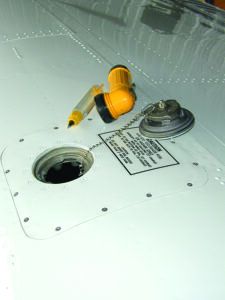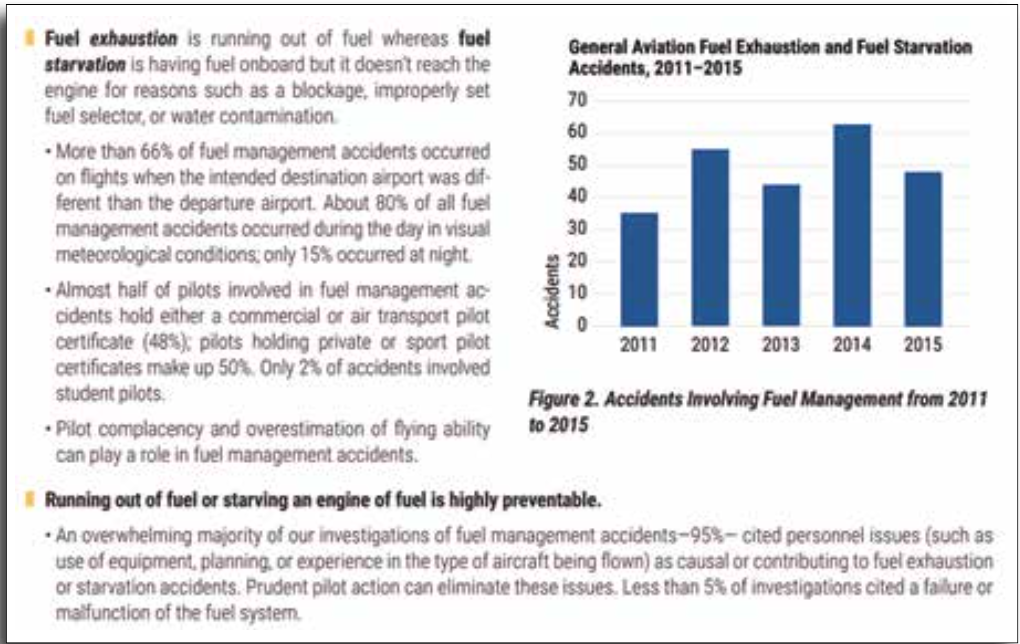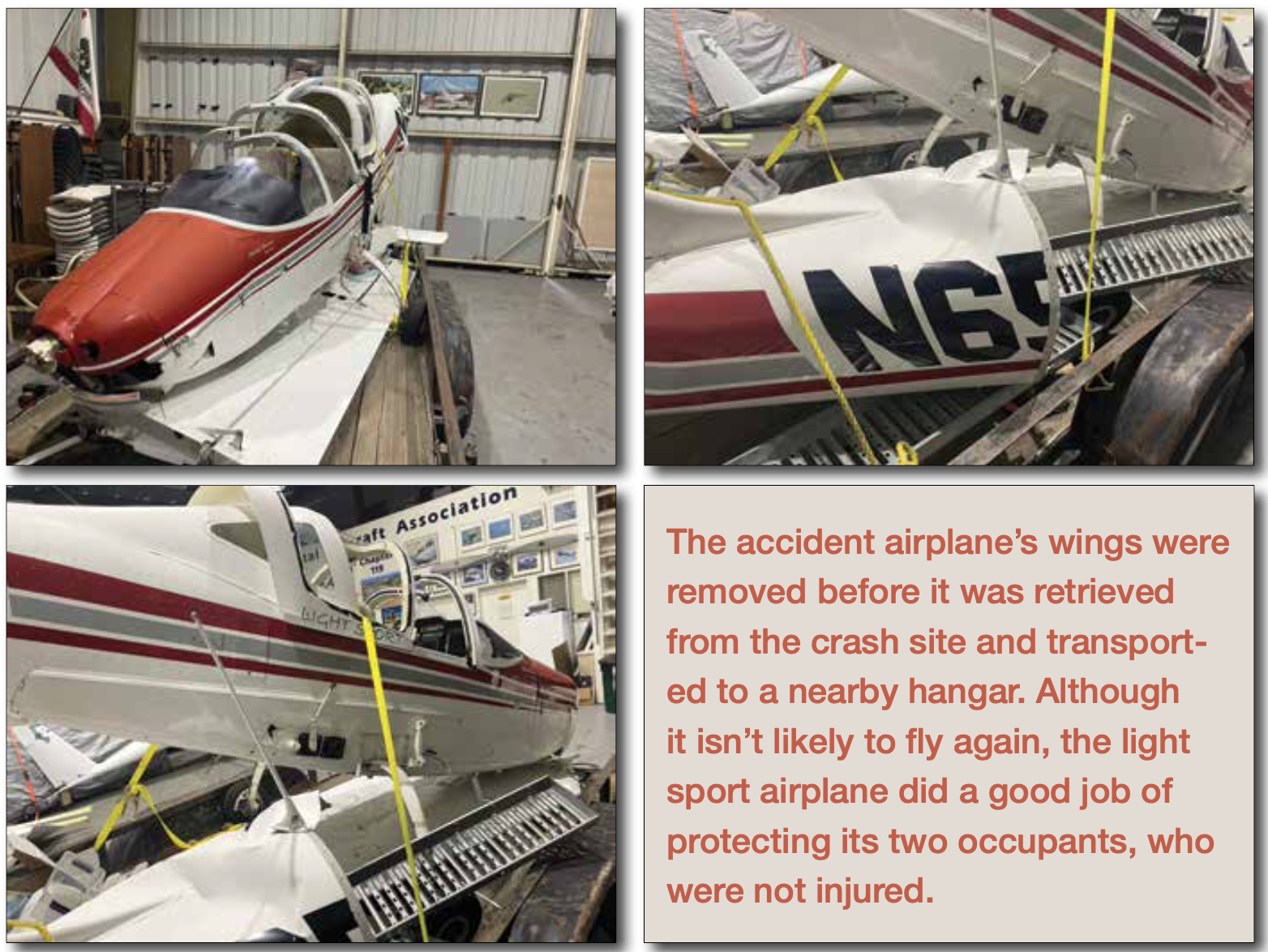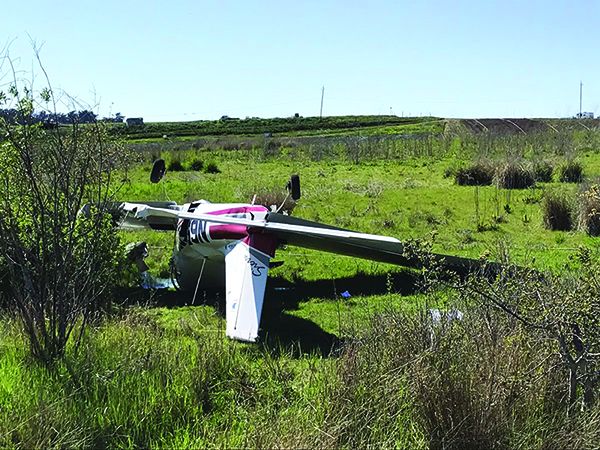When my student crashed last week, I was one of the first to know. After experiencing relief that there were no injuries and disappointment that the Tecnam P2002 Sierra likely would not fly again, an unsettling feeling—was there something more I could have done?—took over. Maybe by relating in detail what happened, what decisions the pilot did and didn’t make, and how it all applies to the rest of us, there is.
On one level, I wish there was some element of this tale that would uncover a heretofore unknown vulnerability, a gap in our training and proficiency regime, or a hidden design flaw. There isn’t. Instead, this accident resulted from your basic, run-of-the-mill fuel exhaustion. The airplane used up all of the fuel aboard, the engine stopped producing power and gravity took over. It’s that simple.
EARLIER THAT DAY…
After Six Delta Foxtrot had completed a number of maneuvers, the certificated pilot returned to the airport for a touch-and-go. As the airplane climbed out, it turned onto the crosswind pattern leg. About this time, the pilot experienced engine roughness and then shortly afterward the engine quit. I want to pause here for just a moment and highlight some of the things the pilot did correctly.
For example, it would have been an easy choice to try to return to the airport. Easy, but probably wrong. This is a pilot’s natural instinct. Unfortunately, there rarely is enough energy available for the airplane to return to the airport. To his credit, the pilot did not try to make the return-to-the-airport maneuver. Another thing the pilot did correctly is to not allow the airplane to stall. When any airplane’s engine fails shortly after takeoff, it’s is in a nose-up attitude and climbing at a relatively low airspeed. When a single’s engine stops creating thrust, the pilot may not correctly manage its angle of attack by shoving the nose over to maintain airspeed. When that happens, there frequently isn’t enough altitude to recover from the ensuing stall.
After verifying there was a problem, the pilot searched for a place to land. He identified a school complex off to his left, and elected to fly away from the airport to a nearby field. Unfortunately, on the way to the field, he clipped a power line. Somewhere in that sequence, the airplane’s right wing struck the ground. The wing’s deformation must have absorbed a tremendous amount of energy and the airplane came to a stop upside down, cracking the carbon fiber-reinforced canopy (which did not collapse). There was no fire, at least probably because there was no fuel, and the pilot and passenger were able to extricate themselves from the cockpit. Neither was injured.

The NTSB has a few choice suggestions for pilots on how to minimize the possibility of fuel exhaustion or starvation:
*Know how much fuel you have on board AT ALL TIMES.
*During your preflight inspection, measure and/or visually confirm the fuel quantity in your tanks. Do not rely exclusively on fuel gauges.
*Know how much fuel you will need for a given flight.
*Make sure you have a fuel reserve for each flight.
*Know your engine’s fuel burn rate and actively monitor the fuel burn rate for the entire time the engine is operating.
*Know your aircraft’s fuel system and how it works.
*Review your aircraft’s POH and use the appropriate checklists.
*Don’t stretch your available fuel supply. Stop and get gas!
SITUATIONAL AWARENESS 101
I can’t tell you how many times I have asked my students how much fuel is in the airplane before a flight and they can’t tell me. Or I ask them if the fuel on the gauges matches what is in the tanks. Or what is the rate of consumption. The most common excuse is, “I will always fly with a full tank, so what does it matter?” Most GA airplanes are designed to fly with full fuel and a reduced payload (fewer passengers, etc.) or full of passengers with reduced fuel, but not full fuel and full payload. Depending on the mission, full fuel tanks are not desirable, but knowing how much they contain always is.
As the pilot in command, you must always, always, always know how much fuel you have, which tank it is in and how much fuel you need. I’m a Civil Air Patrol member, and we train our pilots to switch the fuel tanks (assuming right and left) every 30 minutes. Regardless of which tank you are on, I always teach my students, whenever they check the fuel selector, they must look at the fuel gauges and verify the quantity of fuel in each tank.
In flight, if you determine that the airplane wants to roll left or right, you may be experiencing a fuel imbalance. This can be masked by the autopilot. Often, when flying my airplane, I can see the autopilot commanding a deeper and deeper roll to keep the airplane on the desired course. The problem with letting this continue is when the autopilot disengages (intentionally, or worse, unintentionally), the airplane then rolls into a turn, because the airplane is out of trim.
Of course, pilots use checklists to help them ensure that they don’t miss critical items. This airplane’s checklist has the pilot check a fuel-related item no less than 11 times. One could argue that the checklists ask a fuel-related question so many times that the pilot starts to ignore associated tasks.

HUMAN FACTORS AND FUEL
For most of the time that we have been flying airplanes, we have had problems managing fuel. It’s a chronic problem that has never been fully resolved. Early on, we identified the amount of fuel on board, and then timed the flight based on expected consumption of fuel and hoped we would make it to the destination before the fuel ran out.
Later we put sticks or wires on cork floats so we could get an estimate of how much fuel was left. The next major step was electrical fuel gauges, which have never been very satisfying. More recently, fuel computers have been made available that, when properly set up, can give us a more deterministic view of the fuel situation. However, none of these solutions will work if you do not look and see how much fuel you have or miss identifying which fuel tank you have selected.
All too often, the first indication of a low fuel issue is when the engine starts to sputter and then ultimately dies. Now, what would be a simple matter of switching tanks becomes an emergency and you have only moments to identify what is going on and correct it. In many of these situations, the biggest problem is not that the airplane has run out of fuel; it’s that the pilot is surprised there is a fuel mismanagement situation. This often is because they are not watching their consumption, a fault in the gauge, or perhaps a leaky or missing fuel cap.
When the pilot of a retractable-gear airplane approaching to land has failed to extend the landing gear, there is a loud warning there is a problem. Of course, there are still many cases where the pilot lands with their gear up. While pilots may not have a loud horn to warn us of an imminent fuel problem, we do have other means to establish and verify how much is available. It turns out the same was true of the Tecnam’s pilot.
In this instance, the pilot was flying a modern airplane with primary and secondary flight displays. There was a digital fuel gauge showing the correct level of fuel. When the fuel level is low, the displays turn yellow and then red. I don’t know how the pilot failed to identify the critical fuel situation that was developing. The pilot was reasonably qualified and yet somehow failed to identify an emergent situation.
RECOGNITION, THEN ACTION
At the first sign of any sort of any engine irregularity—whether fuel-related or mechanical—a smart pilot will immediately select a location for an off-airport landing if the situation doesn’t get better. A really smart pilot will already know where to go because he or she will have a plan for such an event and constantly revise it. Regardless, there are some immediate tasks—some call them bold-faced items—that should be accomplished by reflex. They can include:
Check the fuel levels, and then the selector’s position, verifying that the intended tank is selected.
Change tanks anyway, in case the fuel level indicators are malfunctioning or there’s a sudden problem with the selected tank.
Apply carburetor heat if your airplane has a carb. This can melt any ice that may have formed in the induction system. It will also provide a new source of air; perhaps you have hit a bird, or the air filter has failed and is blocking the intake. With fuel-injected engines, activate the alternate air source.
Activate the fuel boost pump, if there is one. A typical low-wing airplane will, plus those with fuel-injected engines. Engine-driven pumps are very reliable, but stuff happens. Use care with an electric pump, which may have a low and a high setting; the high setting could flood the engine.
Check the magneto switch. Turbulence and even normal movement in the cockpit can jostle the mag switch to a position where the engine literally may not be running on all cylinders.
Lastly, execute the emergency checklist. The five previous tasks are immediate-action memory items and, regardless of how well you think you know the airplane, it’s probable you missed something important. Pull out the emergency checklist and execute it, step by step, if only as confirmation you’ve already accomplished the listed tasks. This is an emergency—do not rely on your memory—run the checklist.

AFTERMATH
It’s easy for any of us to assume we could have done better. However, every single one of us has been asked by an instructor how much fuel we have aboard and been unable to accurately answer.
All of these events happened in a matter of seconds and just flying the airplane as far into the crash as possible, as Bob Hoover once said, was about all that he could do. This time, it was enough. The pilot and passenger walked away, and that wasn’t a guaranteed outcome.
It’s easy to blame the pilot, and stop there in trying to identify the root cause of the crash. The gas gauges showed empty, and the pilot didn’t see, understand or act on the information. The pilot ran out of gas, the plane crashed and it’s the pilot’s fault. In retrospect, I wish I had exposed my student to a more intense experience regarding fuel starvation. I believe that he did not understand the progression of the emergency. But if we stop here in our analysis, nothing will change.
Until the day comes that we can remove humans and human error from the cockpit, we need to understand that we are the weak link in the chain and find a way to help us make better choices. Clearly, the solution to this issue has not been identified yet, but I do know that if we don’t continue working on improving pilot attention to fuel levels, airplanes will continue to fall out of the sky when they don’t need to.
We need our regulators and manufacturers to provide better and more robust solutions. Instructors must train pilots to manage fuel better, emphasizing that the consequences can be unforgiving. Pilots need to be diligent and expect the unexpected, and have a plan in place for when it all goes wrong.
I hope that, after reading about the end of Six Delta Foxtrot, you sit down and brainstorm ways you can ensure that you are paying closer attention to fuel management, both before and during your flight. In this and many other cases, the difference between this plane being a twisted lump of metal on a utility trailer instead of sitting on the ramp, tucked into bed, ready to fly tomorrow, was a failure to take seriously the idea that fuel isn’t limitless.
James Warmkessel holds FAA flight, instrument and multi-engine instructor certificates, and is an A&P. He’s also an aviation podcaster and IT professional living in the San Francisco area. Follow his podcast at AvStry.com.




